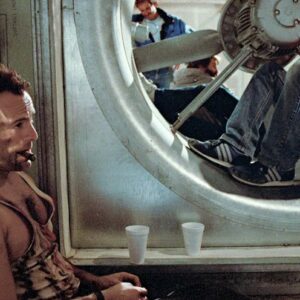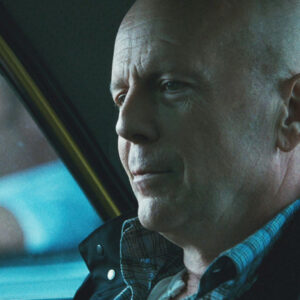Winter’s Bone (2010), directed by Debra Granik, is a poignant and harrowing portrayal of a teenage girl’s survival in the unforgiving world of the Ozarks. Starring Jennifer Lawrence in a breakthrough role, the film traces Ree Dolly’s (Lawrence) quest to find her missing father and protect her family. Amidst a backdrop of poverty, violence, and familial loyalty, Ree’s journey represents more than just a search for a missing person; it is a profound psychological transformation that shifts her from innocence to maturity, from helplessness to empowerment. This transformation is particularly evident in a pivotal scene that marks a significant turning point in Ree’s emotional and psychological development, shifting her from a passive victim to a formidable force capable of confronting the harsh world around her.
Key Scene: The Confrontation with the Violent Men
While Winter’s Bone is full of intense moments that shape Ree’s journey, the scene that most effectively symbolizes her psychological transformation occurs when she confronts the violent men in her family about the whereabouts of her father. The scene unfolds after Ree has ventured into dangerous territory, attempting to find out whether her father, Jessup, is alive, or whether he has been murdered because of his involvement in a drug-dealing operation. She knows that her father’s disappearance has placed her family in jeopardy, and yet, her search for answers is driven not only by necessity but also by a deep sense of familial duty.
Ree’s confrontation with the men, including her uncle, Teardrop (John Hawkes), and the ruthless criminals in her extended family, occurs in a remote cabin. The atmosphere is suffused with tension and danger. Ree stands her ground in a way that defies her initial portrayal as a vulnerable, young girl trying to protect her younger siblings and ailing mother. When the men demand to know why she’s asking questions about her father, Ree’s calm yet determined insistence reveals her steely resolve. This scene marks the transition from Ree as a passive bystander in the face of her family’s dysfunction to a young woman who has learned to navigate and, at times, challenge the violence and corruption around her.
Her confrontation with the men is not only a physical one, but an emotional and psychological battle. When Teardrop threatens her, Ree’s response is one of controlled defiance, a quiet but powerful assertion of her autonomy. She isn’t simply fighting for her father’s whereabouts; she is claiming agency over her own life and future. This moment crystallizes her psychological evolution. No longer is she the innocent, naive girl searching for answers; she has become someone who has learned how to survive in a world that seeks to crush her at every turn. Ree’s transformation is not without its scars, but by the end of the scene, she has fully embraced her role as a protector, a survivor, and a leader.
Analysis of the Scene: From Innocence to Maturity, Helplessness to Empowerment
The psychological stakes of this scene are profound. In the earlier parts of the film, Ree is portrayed as someone who is constantly battling against a system and family structure that has abandoned her. She is a teenager forced to grow up too quickly, and much of the tension in Winter’s Bone revolves around the contrast between her youthful desire for safety and the harsh realities of her environment. However, the confrontation with the men signifies Ree’s entry into a new psychological state—one that is defined by resilience rather than innocence, strength rather than helplessness.
On a psychological level, Ree’s transformation is about survival. It is about the shift from being a passive observer of her circumstances to an active participant in her own fate. This is best illustrated in her demeanor during the confrontation. When Ree enters the cabin, she does so with a quiet confidence that betrays her external fragility. Throughout the film, Ree’s emotional vulnerability is starkly juxtaposed with the toughness that she must embody to protect her family. The men she confronts, with their brutish demeanor and veiled threats, represent the world that Ree must face in order to survive. When she stands up to them, it’s not just an act of bravery—it is a declaration that she has accepted her place within this world, no longer as a victim but as someone capable of challenging the violence that surrounds her.
Jennifer Lawrence’s performance in this scene is crucial in conveying the psychological shifts that Ree undergoes. Lawrence expertly conveys a quiet but intense inner strength that becomes more pronounced as the film progresses. In this moment of confrontation, her character’s transformation is palpable. The subtlety of her performance is key—Ree’s fear and desperation are not erased, but rather tempered by a growing understanding of her own agency. Her physical posture in the scene—standing tall, refusing to back down—visually reinforces the internal transformation she is undergoing. The audience witnesses a young woman who has, in a moment of profound psychological growth, shed the innocence of childhood and emerged as a mature, resourceful adult.
Themes of the Film: Survival, Family Loyalty, and Resilience
The themes of survival, family loyalty, and resilience are central to Ree’s psychological transformation. As the sole caretaker for her two younger brothers and her mentally ill mother, Ree’s survival instincts are honed early on. The economic desolation of the Ozarks, combined with the crumbling structure of her family, leaves Ree with no choice but to mature quickly. In Winter’s Bone, survival isn’t just about physical endurance, but emotional and psychological perseverance. The need to protect her family forces Ree to develop a fierce determination, a mental toughness that propels her forward despite the emotional toll of her circumstances.
Family loyalty plays a complex role in Ree’s psychological evolution. Throughout the film, Ree’s sense of duty to her family is tested at every turn. Her loyalty is both a source of strength and vulnerability, as it ties her to a family that is steeped in crime and violence. Ree’s search for her father, who has been implicated in illegal activities, reveals the moral and emotional contradictions she must navigate. Her loyalty to her family ultimately leads her to confront not only her father’s legacy but also the brutal realities of her environment. By the end of the film, Ree has learned that loyalty does not always mean submission. She has gained the psychological insight that to protect her family, she must be willing to confront and challenge those who seek to destroy it.
Isolation is another key theme that plays a significant role in Ree’s transformation. Throughout the film, Ree is isolated both physically—living in a remote, impoverished community—and emotionally, as she faces the burden of responsibility on her own. This isolation serves as a crucible for her psychological growth. It is in the solitude of the Ozarks, removed from the support systems that might aid her, that Ree learns to assert control over her own fate. Her journey is not just about finding her father but about finding herself in a world that seems to offer no help. This theme of isolation is not just external; it is deeply internal as well, reflecting Ree’s emotional journey from helplessness to empowerment.
Conclusion: Ree’s Struggle and Psychological Growth
Ree Dolly’s journey in Winter’s Bone is a powerful testament to the complexities of personal growth and psychological change. Her transformation from a girl thrust into a brutal reality to a young woman capable of confronting violence and asserting her autonomy is both heartbreaking and inspiring. The pivotal scene where she confronts her family’s criminal underworld marks the climax of her emotional and psychological journey. It is a moment of clarity, where Ree fully steps into her role as both protector and survivor, shedding the remnants of her childhood innocence in favor of a more hardened and pragmatic self.
The broader implications of Ree’s transformation are far-reaching. Winter’s Bone is not just a film about survival in the Ozarks; it is a story about the resilience of the human spirit in the face of unimaginable adversity. Ree’s internal and external struggle embodies the painful but necessary process of psychological change. She emerges from the ashes of her family’s dysfunction not only as a survivor but as someone who has gained a profound understanding of her own strength. Through Ree, the film illustrates that true empowerment comes not from external forces but from within—through the painful but ultimately redemptive process of confronting one’s own vulnerabilities and fears.
In the end, Winter’s Bone is a meditation on resilience, family, and the capacity for psychological transformation. Ree’s journey is a powerful reminder that even in the most isolating and brutal of circumstances, it is possible to find strength, maturity, and hope.





